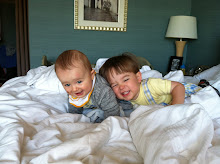The following day we headed out to see the hill tribes who live in the hills around Chaing Mai. There are 6 main groups, the Karen, Lahu, Akha, Hmong, Lisu and Tai (Yao). There are a few other smaller groups as well. On the way to the villages we stopped at the Tham Chiang Dao complex – a natural cave formation of 5 interconnected caves. We walked through Tham Phra Nawn and Tham Seua Dao. The other 3 caves are unavailable in the rainy season because they fill with too much water.
After the caves we went to the Lisu (also called Kayong) and Karen villages. The Lisu are distinguished by the large earrings they wear which stretch out their ears. They place them in the little girls ears at age 3 and slowly increase the size until they are approx 1 inch in diameter! The Karen are the largest tribe in Thailand and are also largely in Burma. A smaller sect of the Karen, the long necked Karen, wear brass rings around their necks, also starting around age 3. The rings initially began when their village was attacked by tigers and several members died from bites to the neck. The local leader decided all women should wear rings around their necks. The girls begin with 3 rings and then add 3 every few years until they are married. The rings cause the neck to become very weak so the women will not take the rings off until they die, because it would be dangerous.
The next tribe we visted was the Ahka. They are considered the poorest tribe in Thailand, migrated from Tibet and had originally made most of their money from the sale of opium. The Ahka are distinguished by their elaborate head gear decorated with fur and silver coins. Several of the older women smoked pipes and their mouths were stained from the chewing of betel berries, which have a mildly stimulating and addictive quality. The Ahka used to farm land, then burn the land and move onto a new place. Each year the leader would drop an egg on the ground, if it broke, they moved; if it stayed hard, they stayed. This was how they could tell the land was too hard to farm. Since burning land is now illegal in Thailand, the government has set up land for them to live on and farm so their homes are now permanent. However, most still live in bamboo huts with thatched roofs. A giant swing in the middle of the village is used 3 days a year for the Ahka new year. At this time the boys and girls dress in their finest since this is the time marriages are arranged and the girls and boys can finally meet. Prior to this, the homes are separated with men sleeping outdoors and women indoors. No man is allowed to enter the women’s room.
After these visits we drove up the mountain, towards Chaing Rai to Mae Chan where we visited the Yao people. Mae Chan was founded by Kuomitang soliders who fled communist China after 1949 and settled in the hills. The Yao people now grow primarily rice and tea and are the most integrated of all the hill tribes. We tasted some delicious freshly grown tea and visited the tea plantation.
Wednesday, August 13, 2008
Subscribe to:
Post Comments (Atom)


No comments:
Post a Comment